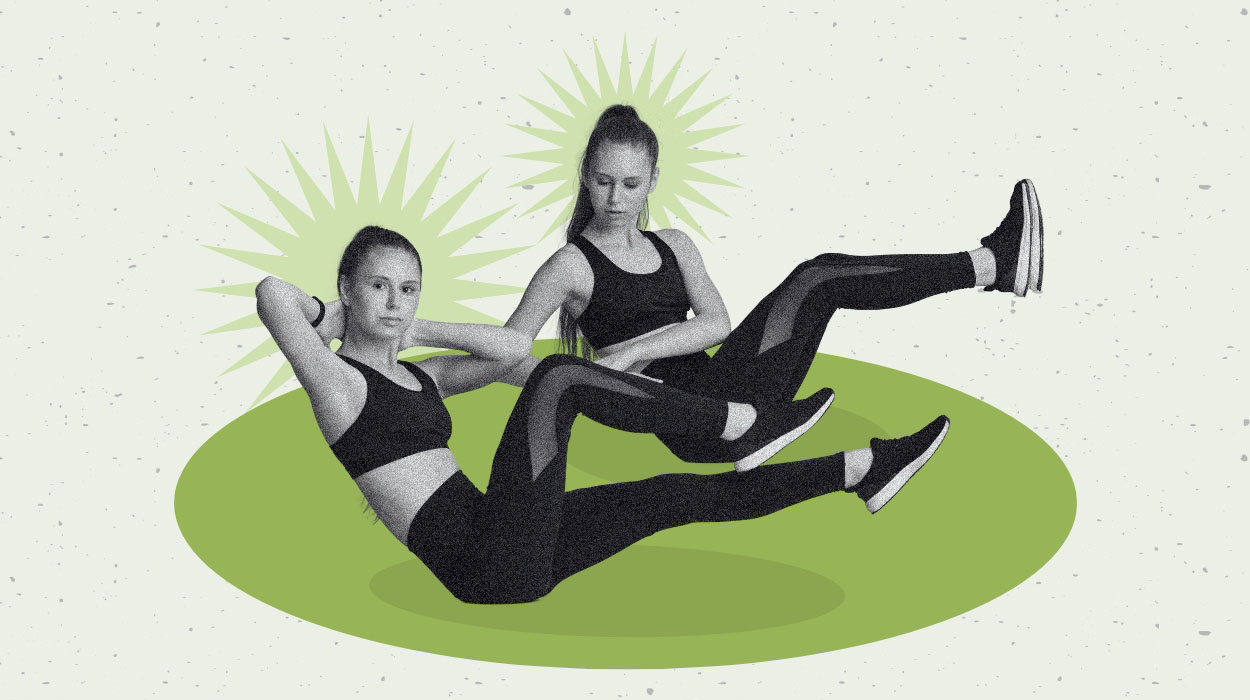
If you want to strengthen your core and get those coveted upper abs, you’re in luck! Plenty of upper ab workouts can help you achieve your goal. A strong core looks great and improves your overall health and fitness by supporting your spine and improving your posture.
This article will give you the eight best upper ab exercises and show you how to work out your upper abs with the best upper ab exercises we could find.
Before we start, it’s worth pointing out that upper ab workouts are not for targeted weight loss — they won’t suddenly torch any fat you have on your midriff! It’s not possible to spot reduce fat. However, if these upper abs exercises don’t do the trick, it could be because you’re not following a healthy diet. Keep in mind that nutrient-dense whole foods help you strengthen your muscles and find a healthy weight.
Best Upper Ab Exercises For A Stronger Core
- Crunch.
- Bicycle crunch.
- Russian twist.
- Reverse crunch.
- Plank
- Side plank.
- Mountain climber.
- Flutter kick.
Best Upper Ab Workouts To Work Your Core
If you want to strengthen your core and get those upper abs to pop, you need to incorporate targeted exercises into your routine. Here are eight of the best upper ab workouts to try at home or the gym:
Crunch
Crunches are a classic abdominal exercise that primarily targets the upper abdominal muscles, specifically the rectus abdominis. This exercise involves lifting your upper body off the ground, creating a “crunching” motion, hence the name.
By regularly incorporating crunches into your workout routine, you can effectively strengthen and tone your upper abs. Benefits include improved core stability, enhanced posture, and better spinal support. Crunches are also versatile exercises that can be modified to suit various fitness levels, making them an excellent choice for those looking to develop a stronger and more defined upper abdominal region.
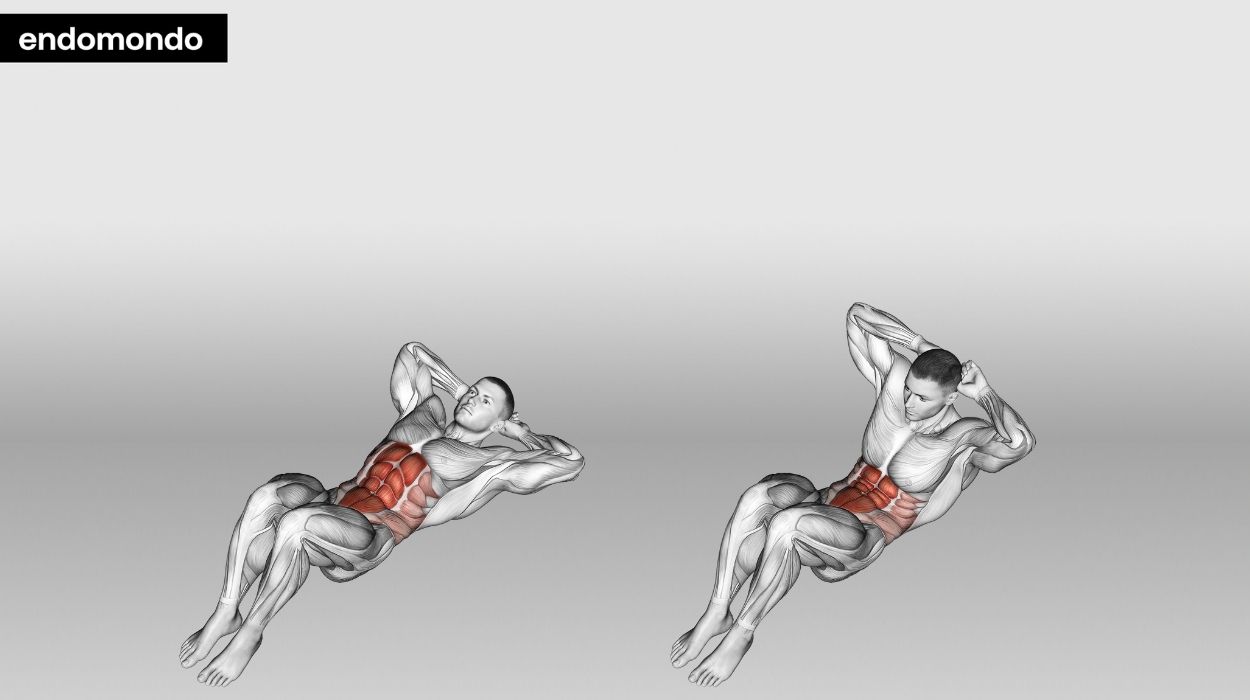
How to do:
- Lie on your back with your knees bent and your feet flat on the floor.
- Place your hands behind your head, and lift your shoulders off the ground.
- Exhale as you crunch upward, keeping your chin off your chest.
- Inhale as you lower back down.
Tips:
- Perform crunches slowly and with control, focusing on quality over quantity.
- Steer clear of lifting your entire upper body off the ground, as this can place excessive stress on your lower back.
- Avoid pulling on your neck or using your hands to yank your head forward.
Optimal Sets and Reps: Three sets of 12 reps.
Bicycle Crunch
Bicycle crunches are a dynamic core exercise that targets the upper abdominal muscles, particularly the rectus abdominis and the obliques. This exercise involves a twisting motion, mimicking the pedaling of a bicycle while engaging the core.
Bicycle crunches not only help strengthen and tone the upper abs but also engage the oblique muscles, leading to a more sculpted and defined midsection. Additionally, this exercise can improve core stability, enhance balance, and support better posture. It’s an effective way to challenge the abdominal muscles while promoting overall core strength and endurance.
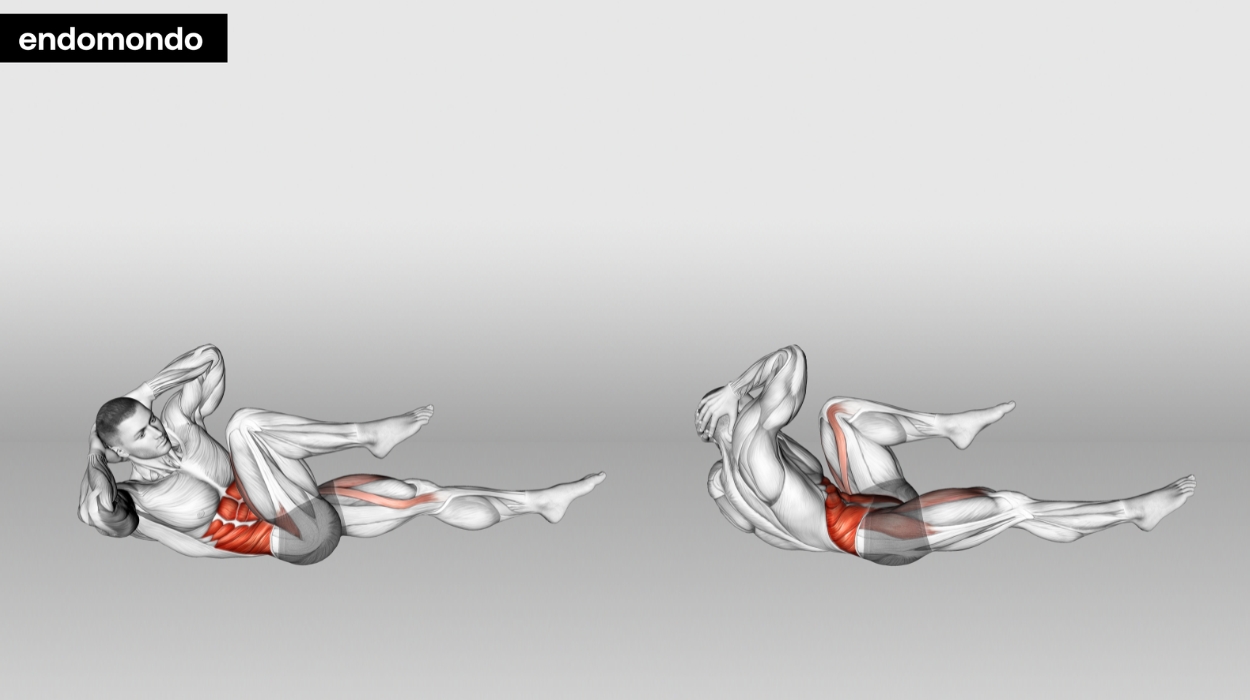
How to do:
- Lie on your back with your hands behind your head, and bring your knees up to a 90-degree angle.
- Lift your shoulders off the ground and bring your right elbow to your left knee while straightening your right leg.
- Switch sides, bringing your left elbow to your right knee while straightening your left leg.
Tips:
- Keep your lower back pressed firmly against the floor to ensure proper form and prevent excessive strain on your back.
- Engage your core muscles and avoid yanking on your neck with your hands, instead lightly support your head with your fingertips.
- Perform the exercise with a slow, controlled movement, focusing on bringing your elbow and knee together on each repetition.
Optimal Sets and Reps: Three sets of 12 reps.
Russian Twist
The Russian twist is a dynamic core exercise that primarily targets the oblique muscles, specifically the external obliques. This upper abs exercise involves a twisting motion of the torso, engaging the core and oblique muscles.
Incorporating Russian twists into your workout routine offers numerous benefits for the upper abs and overall core strength. It helps to strengthen and define the oblique muscles, promoting a more sculpted waistline. The exercise also enhances core stability, which can improve balance and posture. Furthermore, Russian twists can contribute to better rotational power and agility, which can be beneficial in various sports and activities.
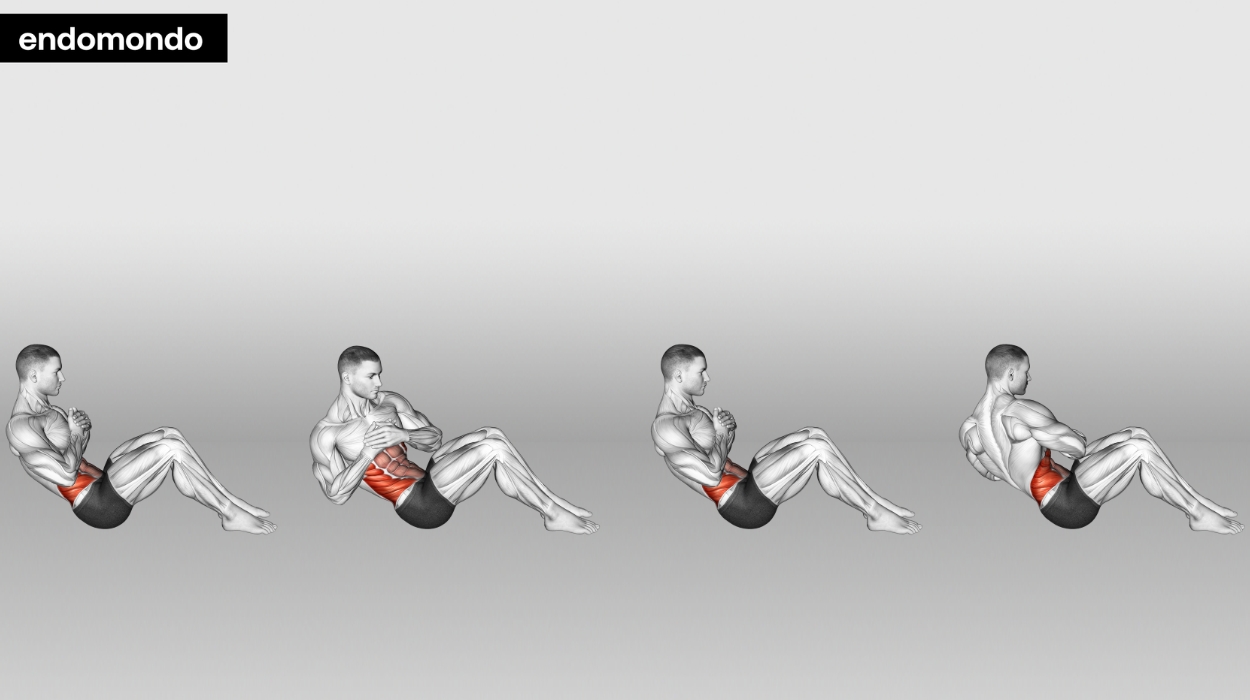
How to do:
- Sit on the floor in the starting position with your knees bent and your feet flat on the ground.
- Lean back slightly and lift your feet off the ground.
- Hold a weight or stability ball in front of your chest, and twist your torso to the right while keeping your hips facing forward.
- Twist to the left and repeat.
Tips:
- Sit up tall with a straight back to engage your core muscles and maintain proper posture throughout the exercise.
- Avoid twisting too far or forcefully, as this can strain your lower back.
- Focus on controlled movements and controlled breathing.
Optimal Sets and Reps: Three sets of 12 reps.
Reverse Crunch
The reverse crunch exercise is a fantastic way to target the upper abdominal muscles effectively. By lifting your legs and hips off the ground, you engage the rectus abdominis, the primary muscle of the upper abs.
Reverse crunches not only strengthen and tone the upper abdominal area but also enhance core stability and posture. This exercise can help alleviate lower back pain by promoting a strong core and supporting the lower spine. It also improves overall abdominal strength, which can lead to better performance in other activities and exercises. As a versatile and impactful upper abs workout, the reverse crunches are an excellent addition to your fitness routine for a well-defined and strong core.
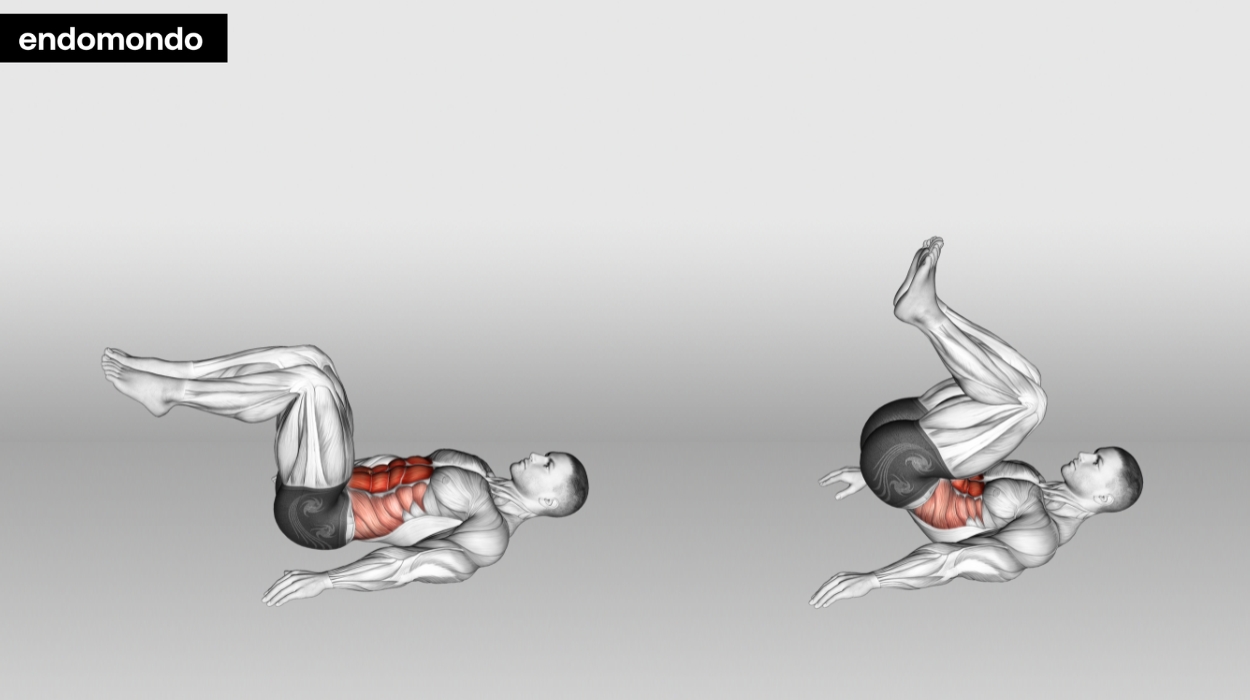
How to do:
- Lie flat on your back with your knees bent and your hands by your sides.
- Lift your hips off the ground while inhaling, bringing your knees towards your chest.
- Slowly exhale and lower back down to the starting position.
Tips:
- Lift your hips off the ground using your lower abs, not your neck or upper body, to avoid straining your neck.
- Avoid using momentum to swing your legs; instead, engage your core to perform the exercise effectively.
- Avoid arching your lower back excessively and keep your core engaged to protect your spine and maximize the benefits of the reverse crunches.
Optimal Sets and Reps: Three sets of 12 reps.
Plank
The plank exercise is a core-strengthening powerhouse, primarily targeting the rectus abdominis and transverse abdominis muscles, making it an effective upper abs workout. By maintaining a straight line from head to heels while supporting your body weight on your forearms and toes, you engage these muscles to the fullest.
The plank helps sculpt a toned and defined upper abdominal area while enhancing core stability and posture. It also engages the lower back, shoulders, and chest, promoting overall upper-body strength. Moreover, this exercise helps improve balance and coordination, making it an essential addition to any fitness regimen. By consistently practicing planks, you can develop a strong and well-balanced core, which not only enhances your physique but also supports everyday movements and activities.
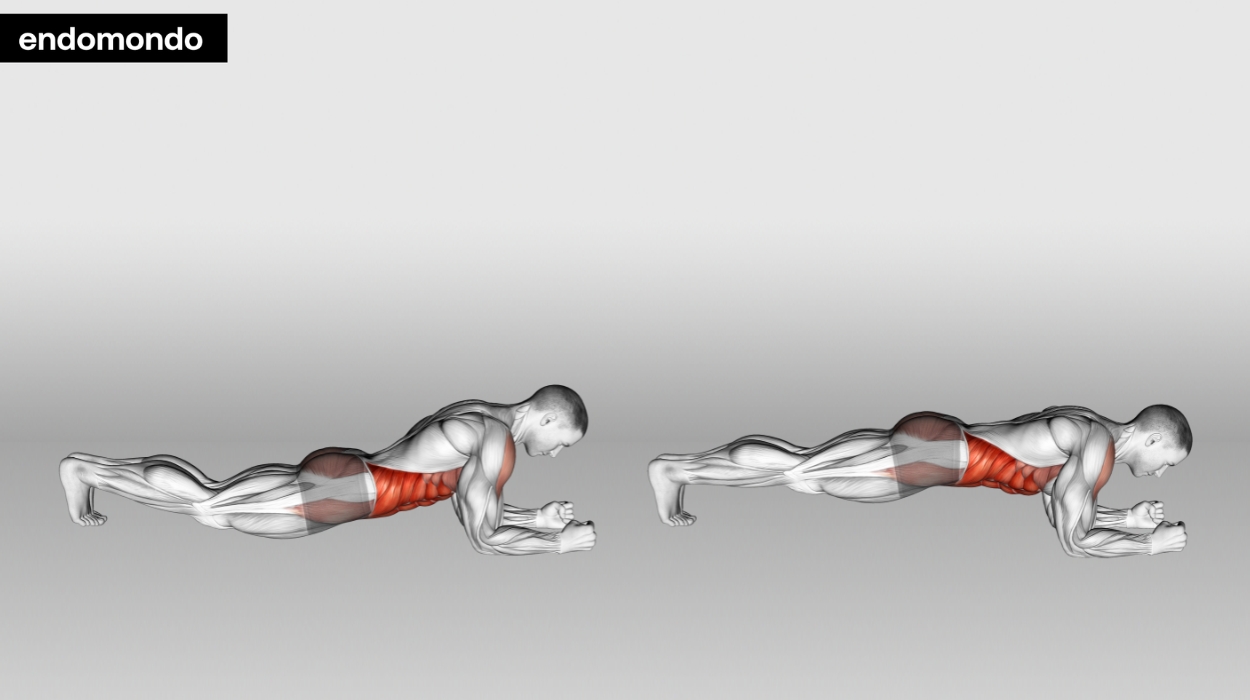
How to do:
- Start in a push-up position, but hold yourself up with your forearms instead of lowering yourself to the ground.
- Keep your back straight and hold for 30 seconds. Work your way up to holding the plank for 1 minute.
Tips:
- Maintain a straight line from head to heels to engage your core effectively and prevent strain on your lower back.
- Inhale and exhale steadily to stay relaxed and focused.
- Ensure your elbows are directly under your shoulders and distribute your weight evenly to minimize discomfort and prevent injury.
Optimal Sets and Reps: Three sets of 30 seconds per set, resting for 30-60 seconds between sets.
Side Plank
The side plank exercise is a fantastic way to target the oblique muscles and strengthen the entire core, making it an excellent choice for an upper ab workout. By balancing on one forearm and the edge of your feet, you engage the obliques on the sides of your torso, promoting a trim waistline and enhanced core stability. Additionally, the muscles around the shoulder blades (scapular stabilizers) are activated to maintain proper upper-body alignment.
Besides sculpting toned obliques, this exercise helps improve overall core strength, leading to better posture and reduced risk of lower back pain. It also enhances balance and stability, which can be especially beneficial for sports and daily activities. What’s more, side planks can assist in improving flexibility in the hips and spine, making them a versatile and effective exercise for a strong and well-rounded upper ab workout.
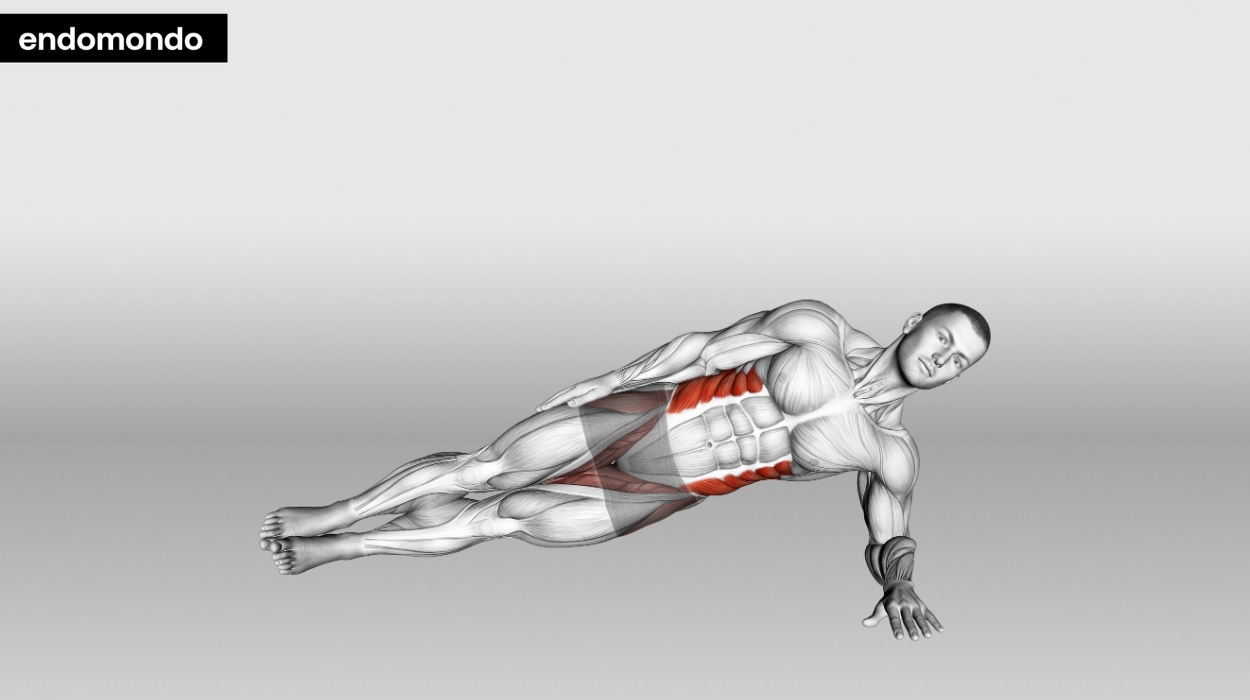
How to do:
- Lie on your side with your elbow directly under your shoulder and your legs stacked on top of each other with both legs straight.
- Lift your hips off the ground, creating a straight line from your head to your feet.
- Hold for 30 seconds, return to the starting position, and then switch sides.
Tips:
- Maintain proper alignment by stacking your shoulder, hip, and ankle in a straight line.
- Keep your core engaged and lift your hips as high as comfortably possible.
- Take slow, controlled breaths to maintain focus and prevent tension while holding the side plank position.
Optimal Sets and Reps: Two to three sets of two to three reps on each side.
Mountain Climber
Mountain climbers are a dynamic exercise that engages multiple muscle groups, making them an excellent choice for an upper ab workout. This exercise primarily targets the rectus abdominis, the central muscle responsible for a defined six-pack appearance. By performing mountain climbers in a plank position, you engage your core muscles intensely, promoting strength and endurance in the upper abdominal region.
Mountain climbers not only help sculpt and tone the upper abs but also provide a cardiovascular workout, promoting fat loss and overall fitness. Mountain climbers enhance core stability, which is essential for maintaining proper posture and preventing back pain. Furthermore, this exercise improves coordination and agility, making it a versatile addition to your upper ab workout routine.
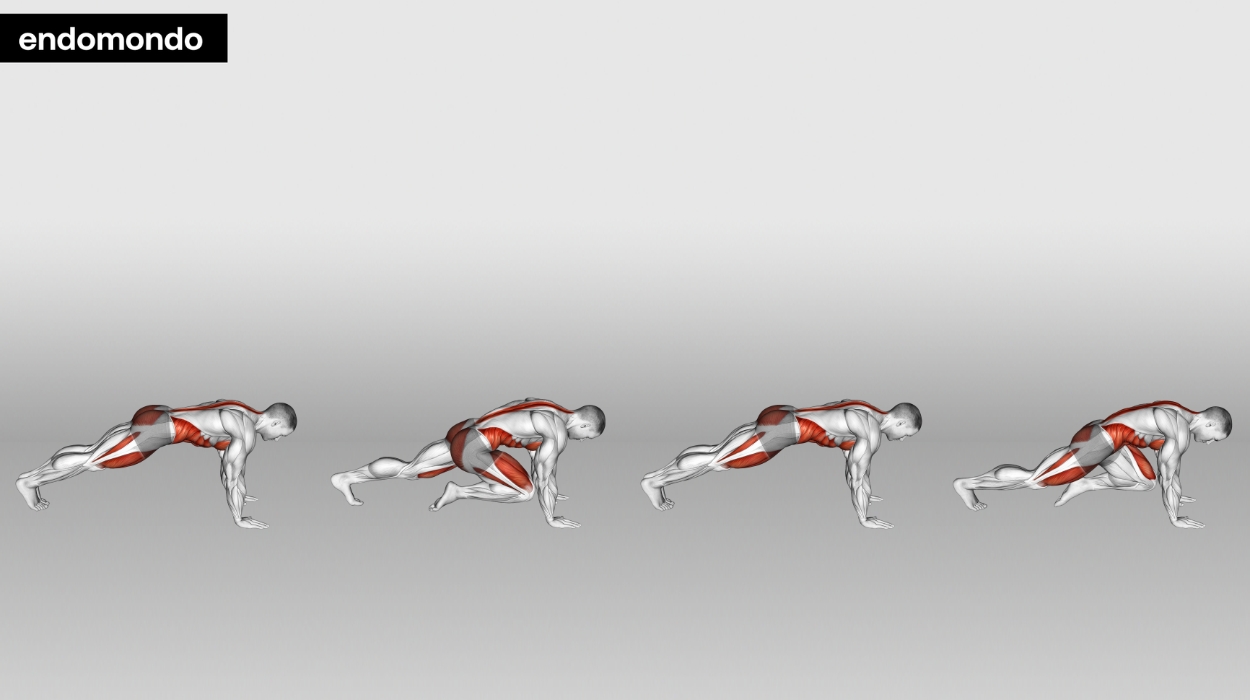
How to do:
- Start in a push-up position with your arms shoulder-width apart, keeping your arms straight.
- Bring your right knee towards your chest, and then switch, bringing your left knee towards your chest.
Tips:
- Distribute your weight evenly between your elbow or hand and forearm to reduce strain on the joint.
- Avoid rushing through the exercise, as maintaining form and control is key for maximum effectiveness and safety.
- Engage your core throughout the movement to work your ab muscles and stabilize your body.
Optimal Sets and Reps: Three sets of 12 reps.
Flutter Kick
Flutter kicks are a fantastic exercise for targeting the upper abdominal muscles. This dynamic movement primarily engages the rectus abdominis, helping you strengthen and tone your upper abs effectively. By keeping your legs lifted and performing small, rapid kicks, you create a challenging workout for this specific area.
There are various advantages to including flutter kicks in your upper ab exercise regimen. They not only help develop a well-defined six-pack but also improve core stability and endurance. Flutter kicks engage the entire core, promoting better posture and reducing the risk of back pain. This exercise also enhances hip flexibility and overall lower body strength, making it a valuable addition to your upper ab workout for a more complete core workout.
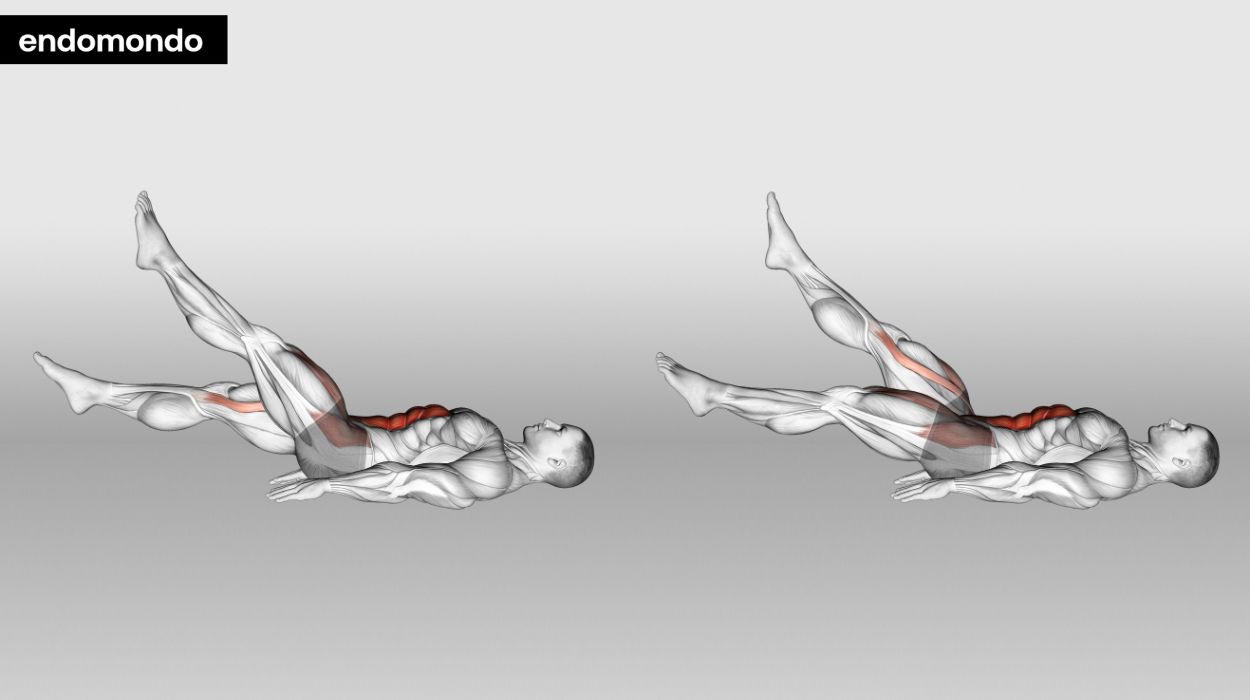
How to do:
- Lie on your back with your arms extended and palms flat by your sides.
- Lift your legs six inches off the ground and alternate kicking up and down.
Tips:
- Keep your legs a few inches off the ground for better control and to engage your upper abs muscles effectively.
- Avoid arching your back to prevent strain.
- Maintain a controlled pace and focus on the quality of your movements rather than speed.
Optimal Sets and Reps: Three sets of 30 seconds.
Remember to engage your internal and external oblique muscles throughout each exercise and breathe properly. These workouts will help you achieve a stronger core and toned upper abs.
What Are The Upper Abs?
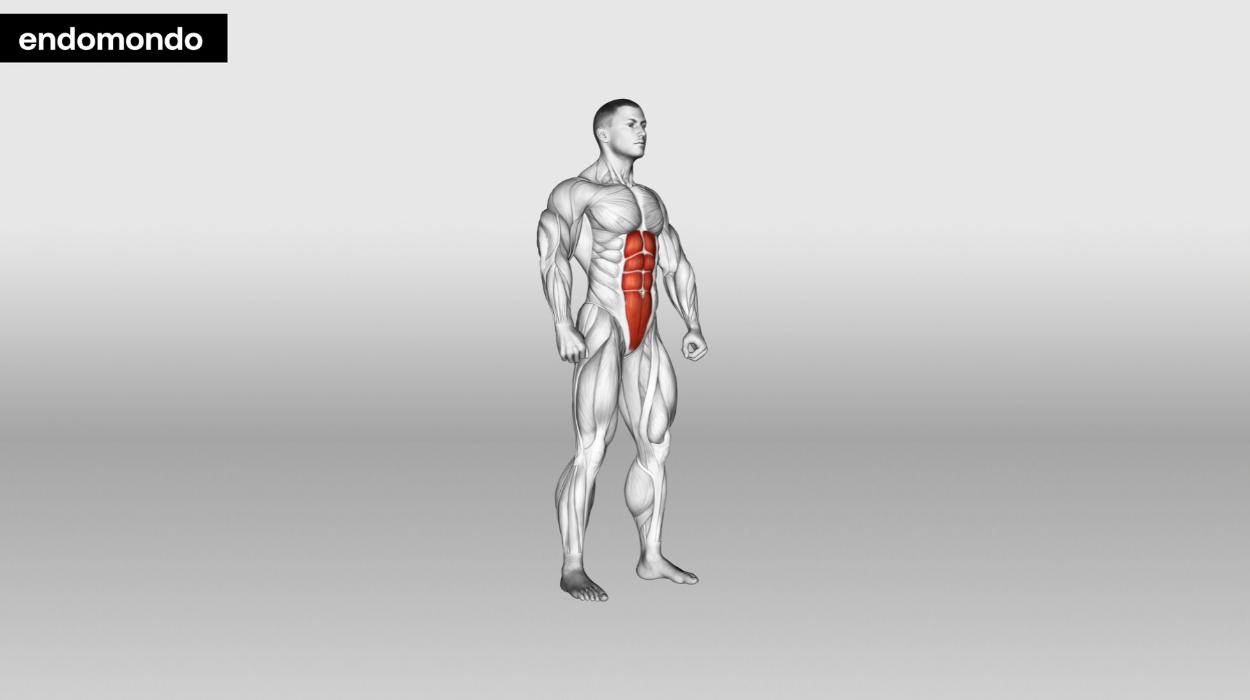
When you think of abs, you might picture a six-pack. But your abs are actually made up of several different muscles, including the upper abs.
The upper abs are located in the upper part of your rectus abdominis muscle, which runs from your ribcage to your pelvis. These muscles are responsible for flexing your torso or bringing your ribcage closer to your pelvis.
To effectively target your upper abs, performing an upper abdominal workout that specifically engages these muscles is important. While many ab exercises work the entire rectus abdominis muscle, certain exercises can place more emphasis on the upper portion.
Common Mistakes And Safety Tips
When doing your upper abs exercise, it’s important to avoid common mistakes that can lead to injury. Here are some tips to help you stay safe while working on your core:
Using Momentum To Lift Your Body
Using momentum to lift your body can make your workout less effective and increase the risk of injury. Instead, focus on using your abdominal muscles to lift your body and avoid swinging your arms or legs.
Safety Tip: Activate your core muscles
Engage your core muscles by pulling your belly button towards your rib cage and squeezing your abs. This will help you maintain proper form and avoid injury.
Overworking Your Abs
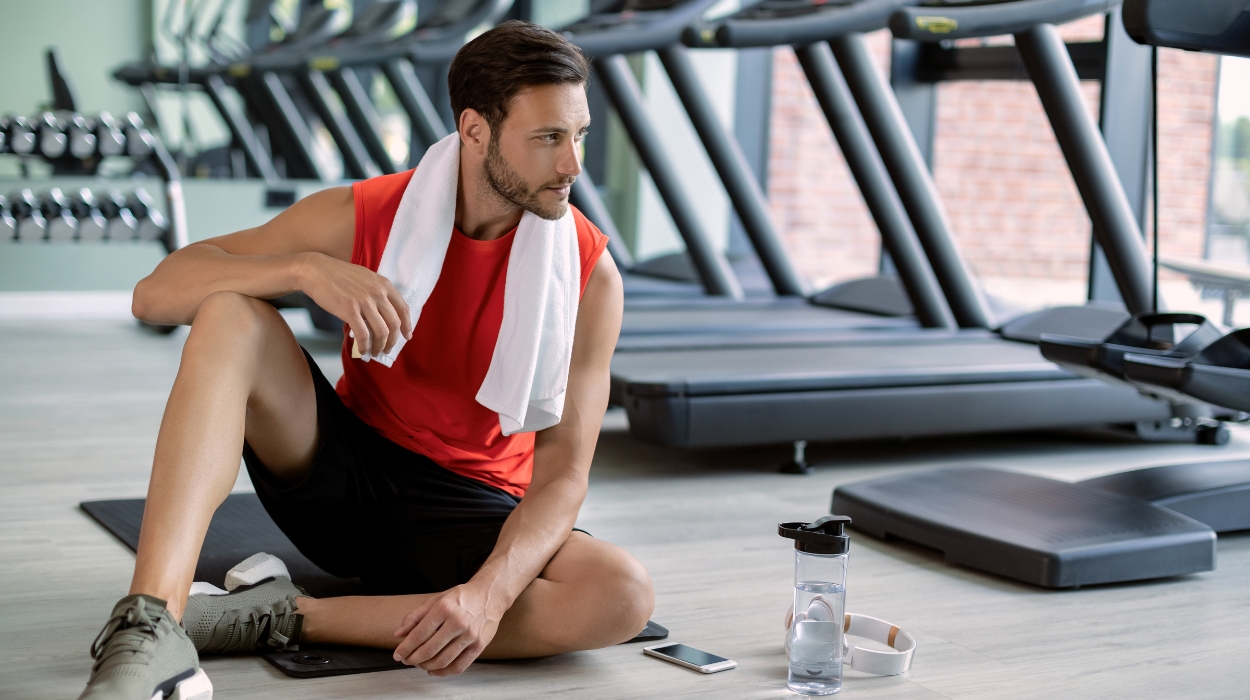
Overworking your abs can lead to muscle strain and fatigue. Giving your muscles time to rest and recover between workouts is important. You don’t need to work them out daily, a few times a week is usually enough.
Safety Tip: Take breaks and rest
Take breaks between sets and workouts to allow your muscles to rest and recover. Additionally, make sure to get enough sleep and proper nutrition to help your muscles recover.
Neglecting Other Muscles
Focusing solely on your upper abdominals can lead to muscle imbalances and increase the risk of injury. Working on your entire core, including your upper and lower abs, back, hip flexors, and glutes, is important.
Safety Tip: Incorporate full-body exercises
Incorporate full-body exercises, working both your lower and upper body, into your workout routine to help strengthen all of your core muscles.
By avoiding these common mistakes and following the safety tips, you can effectively work on your upper abs and strengthen your core. Always listen to your body and consult a healthcare professional before starting any new exercise routine.
The Bottom Line
Adding upper ab workouts to your fitness routine can help you develop a stronger core. You’ll improve your athletic performance, reduce your risk of injury, and enhance your overall fitness.
Here are some key takeaways to remember as you build a stronger core:
- Focus on form: Proper form helps you engage the right muscles and reduce your risk of injury. Consider working with a personal trainer or fitness professional to ensure you’re using the proper form.
- Mix it up: Variety is key in upper ab workouts. Incorporating a range of upper and lower ab workouts can help you engage different muscles and prevent boredom. Consider trying exercises like planks, crunches, and sit-ups to challenge your core.
- Be consistent: Consistency is key to building a stronger core. Aim to do upper ab workouts at least a few times a week. Over time, you’ll see improvements in your core strength and overall fitness.
- Abs begin in the kitchen!: All the exercise in the world won’t do any good for showing your abs if you do not have a healthy diet. This means getting all the vitamins and nutrients your body needs from nutrient-dense whole foods. Many supplements are available if your natural diet is insufficient to meet your needs. You can also try fat burners to help you lose weight if necessary.
Frequently Asked Questions
Some of the best exercises for targeting your upper abs include crunches, sit-ups, and leg lifts. These exercises engage the rectus abdominis muscle, which is the main muscle responsible for creating the six-pack look.
Your abs can grow with the right training and nutrition, like any muscle. However, genetics play a role, too. Some people naturally have more defined abs than others, regardless of how much they work out.
Your muscles need time to recover between workouts, so giving them at least one day of rest between ab workouts is best. Additionally, it’s important to vary your workouts to target all areas of your core, including your lower abs and obliques.
There’s no one best workout for your upper abs, as different exercises work for different people. To get the most out of your workouts, it’s important to focus on proper form and engage your abs throughout each exercise.
Resources
Endomondo.com refrains from utilizing tertiary references. We uphold stringent sourcing criteria and depend on peer-reviewed studies and academic research conducted by medical associations and institutions. For more detailed insights, you can explore further by reading our editorial process.




